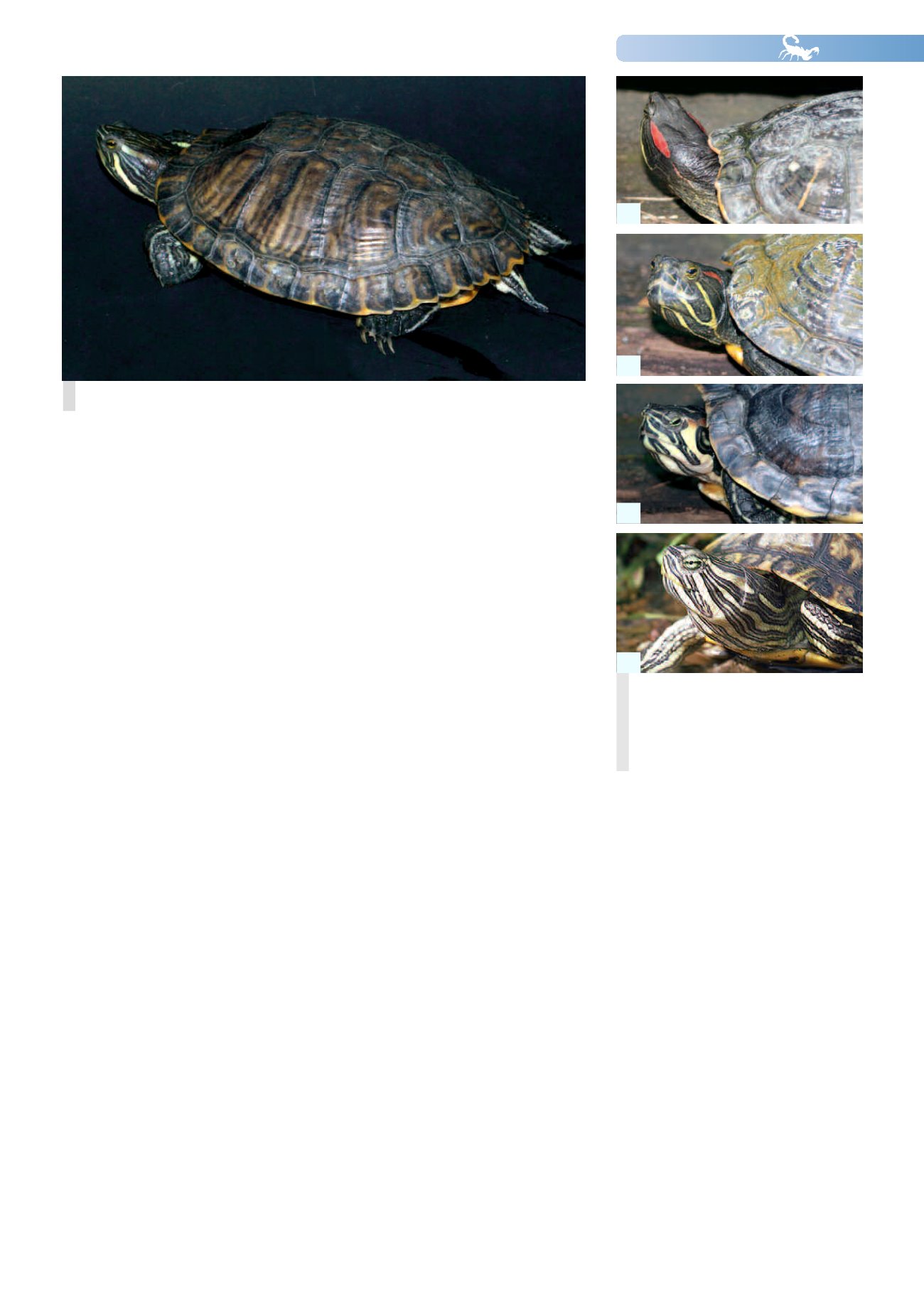
NEWS 110
41
Head pattern of the three subspecies of
Trachemys scripta mentioned, for purposes of
comparison:
1+2 Red-Ear,
T.scripta elegans
3 Yellow-Ear,
T.scripta
4 Cumberland,
T.scripta troosti
swamp turtles will get their enjoyment
from watching their charges grow and
thrive, in much the same way that it is
enjoyable to see a plant grow and thrive
in the garden or on the windowsill. A nice
side benefit of this observation is that you
learn a lot about the creatures that you
keep. You get to know their special
characteristics and their life history,
develop an interest in their natural
environment, and so on. Only in this way
can someone become knowledgeable
about the conservation of animals,
species, and the environment, and not by
coming up with esoteric theses without
having the faintest idea about the animals
themselves.
Because all swamp turtles are constantly
in danger of becoming subject to ban on
their importation or even their
maintenance, we need to make an
increased effort to breed them. In so
doing it is important to keep the
subspecies separate and pure-blooded, as
only in this way can we ensure that pure-
strain stocks will be available in the future
for scientific study in the terrarium.
Maintenance of the Cumberland Turtle
The object of this article is not so much to
go into maintenance and breeding as to
highlight the problems linked with the
trade in swamp turtle babies. Even so a
number of basic hints on their care will
not go amiss here.
Anyone interested in these turtles should
start by obtaining a handbook on them
and studying it in detail.The nest step is to
acquire a group of juveniles of the desired
species or subspecies. Juveniles always
get along well together. Because it isn't
possible to tell the sexes apart in
hatchlings, purchasing five, or better ten
youngsters is the surest way to obtain
both males and females. It is often difficult
to get hold of suitable individuals later!
The situation is somewhat different if you
are able to buy stock from a breeder, as
the sex of the hatchlings can be controlled
to some extent by the incubation
temperature of the eggs. But this too
works only up to around 90% of the time.
It should also be borne in mind that if
these turtles are maintained as Nature
intended then they require 6-8 years to
attain sexual maturity. That is a long time,
during which you may lose one or more
individuals due to accident or disease.This
is another reason to buy a sufficiently
large starter group.
Swamp turtles are active swimmers, so the
rearing tank for the first two years should
have a bottom area of 80-120 cm x 40-60
cm. The water depth should be 15-20 cm,
with another 40-50 cm of air space above.
The large air space is required because
these turtles need a heat lamp above the
land area. A source of UV light should also
be provided, and in addition these turtles
require a brightly illuminated tank. The
water area doesn't need additional
heating in the living-room but should be
well filtered. It is essential to ensure that
the filter inlet is shielded so that the
babies can't be sucked in. Air-powered
filtration is best.
Adult swamp turtles require really large
aquaria of at least bath-tub size and a
land area to match. If possible they should
be kept outdoors from the end of May to
the end of September. Permanently high
temperatures and too rich a diet lead to
far too rapid growth, which will have
consequences for the turtles later and
often leads to premature death. So even
when they are kept indoors you should
regularly simulate periods of bad weather
and use only food designed specially for
swamp turtles. with a vegetable
component appropriate to their age.
1
2
3
4
Female Cumberland Turtle.


